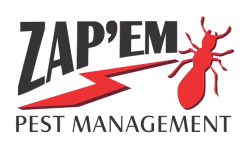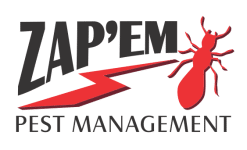Termites are often called the “silent destroyers” for good reason. They work quietly behind walls, under floors, and in roof spaces, causing major structural damage before homeowners realise there’s a problem. On the Gold Coast, where conditions are ideal for termites year-round, this makes inspections and ongoing management critical. Most homeowners look for obvious damage like crumbling timber, but by then it’s too late. Here are five subtle signs of termite activity that often go unnoticed, and what to do if you spot them.
Hollow-sounding timber
One of the most common but easily overlooked signs of termites is hollow timber. When termites eat through wood, they leave only a thin outer layer intact. Knocking on skirting boards, window frames, or door jambs may reveal a hollow or papery sound. Many homeowners mistake this for aging timber, but it is a red flag for internal damage caused by termites.
Mud tubes along foundations or walls
Subterranean termites build protective mud tubes, often the width of a pencil, to travel from the soil to timber. These tubes are usually found along concrete foundations, brickwork, or garden walls. They look like dried mud and are often mistaken for dirt or minor cosmetic issues. If you spot mud tubes, it is a sign that termites are already active on your property.
Tight-fitting doors and windows
When termites are active in timber frames, their moisture and feeding can cause wood to swell and warp. This makes doors or windows suddenly hard to open or close. Many homeowners assume it’s just humidity, but in a Gold Coast climate, tight doors and windows can be a sign of underlying termite damage.
Discarded wings
Termite swarms occur when reproductive termites leave the colony to form new ones. After swarming, they shed their wings. Finding small piles of wings near windowsills, light fittings, or on floors can mean a colony is nearby. Swarms are most common in spring and summer on the Gold Coast, especially after rain.
Bubbling paint or damaged plaster
When termites tunnel just beneath the surface of plaster or paint, it can create bubbling, cracking, or uneven surfaces. Homeowners often assume this is water damage, but it is sometimes the result of termites feeding just beneath the surface.
Why professional inspections matter
The tricky part with these signs is that they can be mistaken for everyday wear and tear. That’s why a professional inspection is the only reliable way to confirm whether termites are present. A termite inspection nvolves moisture detection, thermal imaging, and experienced eyes that know how to find activity early. If termites are confirmed, a tailored termite management system such as Trelona baiting stations or a chemical barrier will be recommended to eliminate the colony and protect your home long-term.
The risks of ignoring early signs
Termites can consume a home’s timber framing at an alarming rate. Left untreated, a single colony can cause thousands of dollars in damage within months. Worse, insurance policies generally do not cover termite damage. That makes early detection and prevention the most cost-effective solution.
What to do if you suspect termites
Avoid the temptation to spray or disturb termites if you see them. DIY treatments often scatter the colony, driving them deeper into your home and making treatment more difficult. Instead, call a licensed professional immediately to carry out an inspection and recommend the correct management system.
Spotting these five hidden signs could mean the difference between a simple treatment and a costly repair bill. Annual inspections combined with a professional termite management system provide the best long-term protection for Gold Coast homeowners. If you’ve noticed any of these warning signs, book a termite inspection today and take the first step in safeguarding your home.



